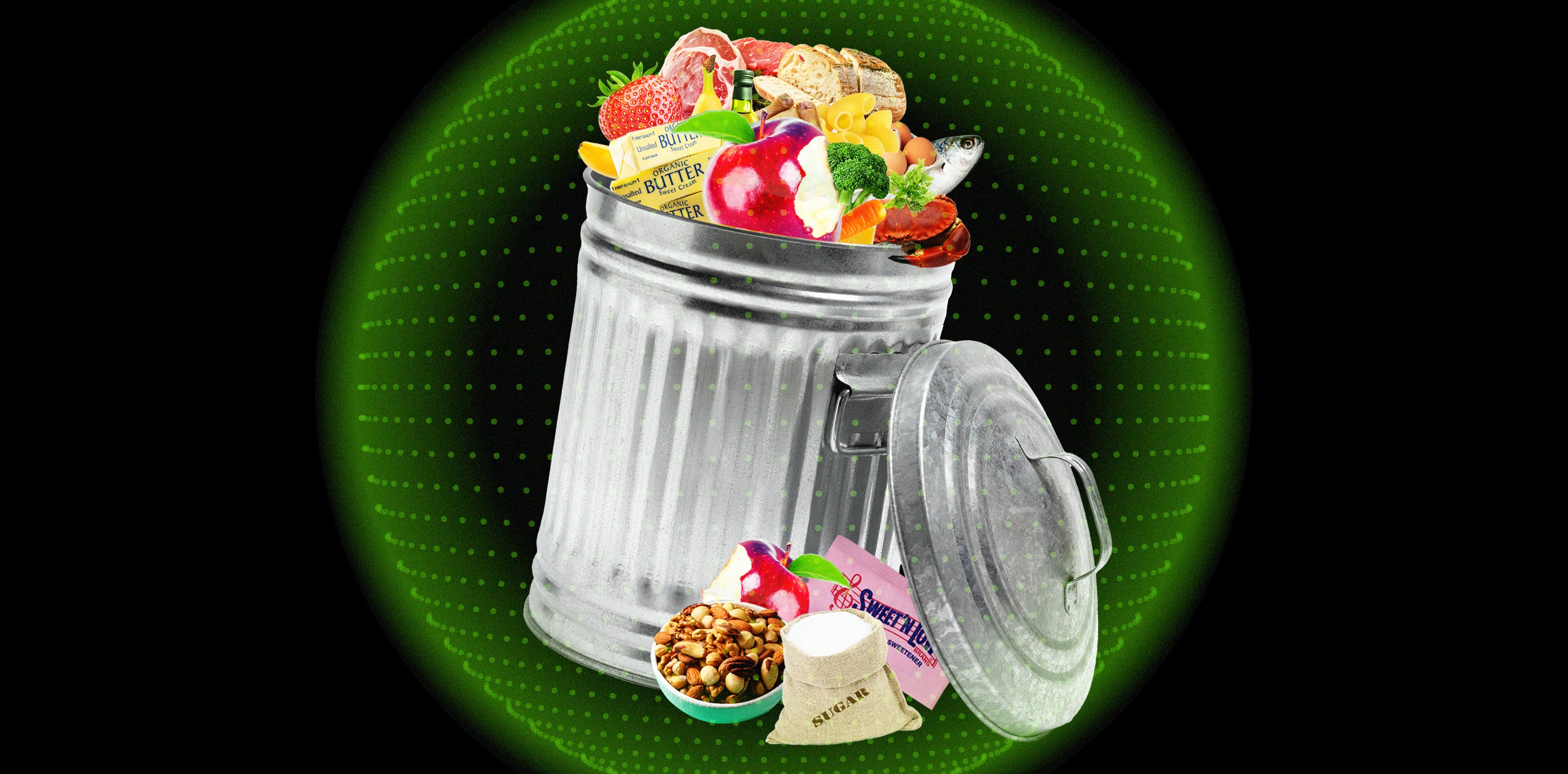
Consider the apple. Arguably America’s most iconic fruit, and the one we as a nation consume the most, the apple is a crucial component of our culture (American as apple pie!), diets, and economy.
According to the United States Department of Agriculture (USDA), the apple ranks as America's favorite fruit, beating out other produce legends like oranges and bananas. Last year, the United States produced some 4.36 million metric tons of apples, the fourth largest producer of the fruit behind China, the EU, and Turkey. By one recent USDA estimate, every person eats about 26 pounds of apples a year.
In other words, the apple is, by so many measures, America’s national fruit. And as such, the way we sell, eat, and, yes, waste it is typical of all of our food.
In 2023, millions of apples were left to rot on the ground on purpose across the country. A combination of money — bumper crops, declining exports, retaliatory tariffs — and ugly fruit (made so by hail) hit farmers hard.
In West Virginia, Senator Joe Manchin stepped in and found a way to ship his state’s modest yield of apples to hungry mouths (and get paid for it). In so many other places, the apples were left to rot. It was just good business sense.
This is a story that’s familiar across the world with various farmers having nowhere to turn when the weather and market forces align against a crop.
"There's over 100 billion pounds of produce waste in this country every year; we only need 7 billion to drive food insecurity to zero," Mike Meyer, head of advocacy at The Farmlink Project, told NPR last year, at the time of the apple crisis. Farmlink was the group that took the apples off West Virginia’s hands and donated them to charities devoted to solving hunger. Their work demonstrated a simple, low-tech solution to the food waste problem.
There are other innovative ways apple growers are attempting to prevent loss on the farm. For example, a representative for USApple told Inverse that many apples are saved because of the use of controlled-atmosphere storage, a technology created in the 1930s at Cornell University that controls the temperature and atmosphere where apples are stored. Using this technology, apples sit in an environment that is roughly 2 percent oxygen. This, combined with tightly regulated humidity, temperature, nitrogen, and carbon dioxide levels, slows the apples’ ripening rate, allowing them to stay fresh longer — as long as they are eventually sold, that is.
In fact, there are many similarly high-tech solutions to food waste — including storage control, AI-run distribution systems, anaerobic digesters, and more. But for these technologies to be effective, everyone – experts, farmers, and Americans who visit grocery stores – need to have a handle on the scope of the food waste in the country.
Waste makes food more expensive, creates food insecurity across the globe, and, in the United States alone, releases 170 million metric tons of carbon-dioxide-equivalent GHG emissions, according to a 2021 Environmental Protection Agency report, which is equivalent to the annual CO2 emissions of 42 coal-fired power plants. Globally, according to a 2022 United Nations report and the 2021 EPA report, food loss and waste account for about 8 percent of global greenhouse gas emissions.
The problem is big, but when you dig into it — as we do in the charts below — the solutions become clearer. The way we produce, distribute, and eat food needs to change in the United States. How else are we going to live up to that old proverb, "waste not, want not"?
The Big Picture
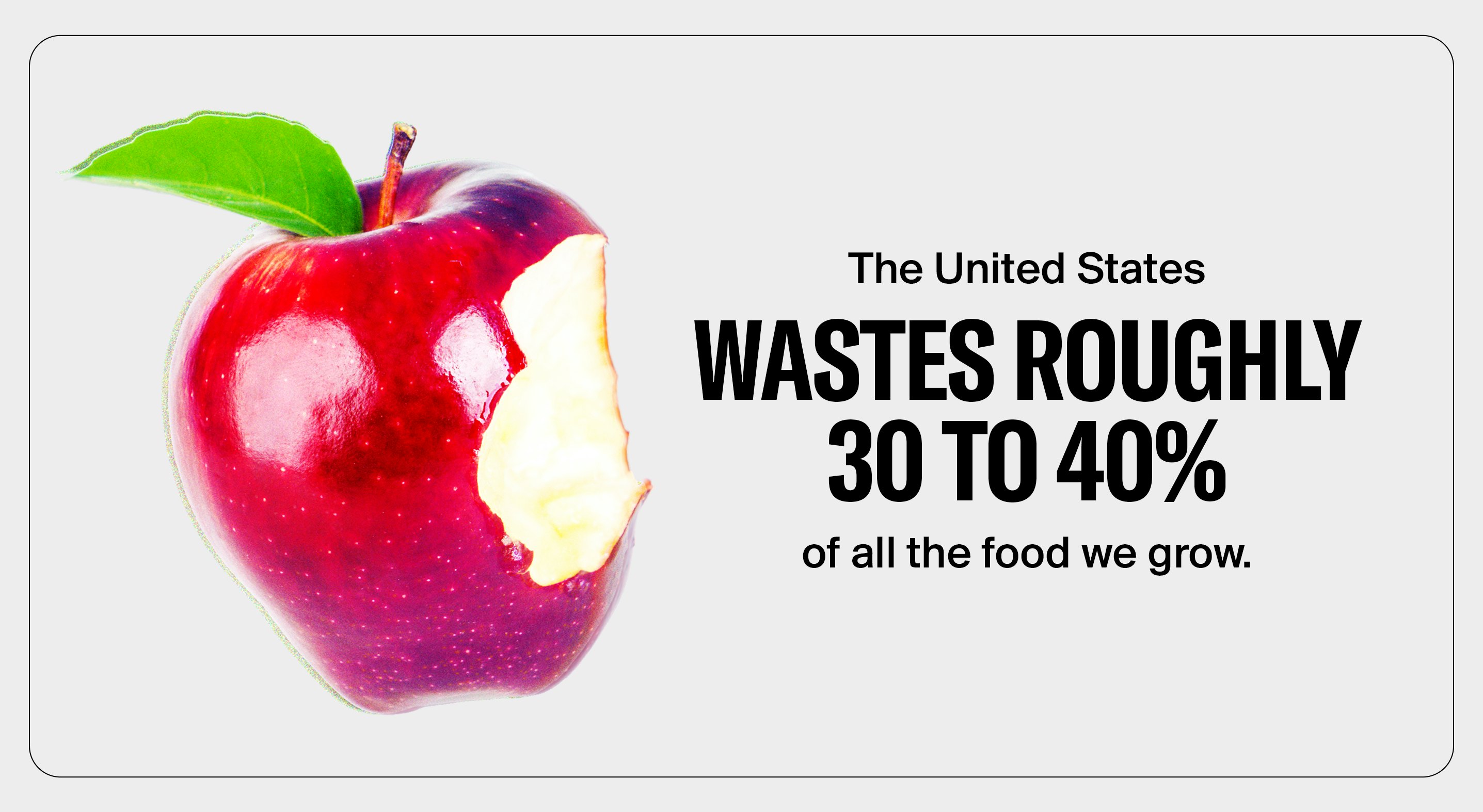
The EPA’s latest report on food waste, which pulls data from the USDA’s 2010 Economic Research Service, estimates that Americans, on average, waste 30 to 40 percent of the food we produce. That corresponds to 133 billion pounds of food and $161 billion worth lost. “Food is the single largest category of material placed in municipal landfills,” the report says. And the United States is not an outlier. Worldwide, about 30 percent of the food humans produce gets lost or wasted annually.
Uneaten sustenance is not the only thing forfeited when we don’t finish our plates. Land and water use, as well as energy and human labor, all get squandered, too. In the United States, “each year, food loss and waste from farm to kitchen embodies an area of agricultural land the size of California and New York combined,” the EPA’s 2021 report says. Worldwide, a whopping 30 percent of the land set aside for farming and agriculture is used to produce food that won’t get eaten.
Where We Waste
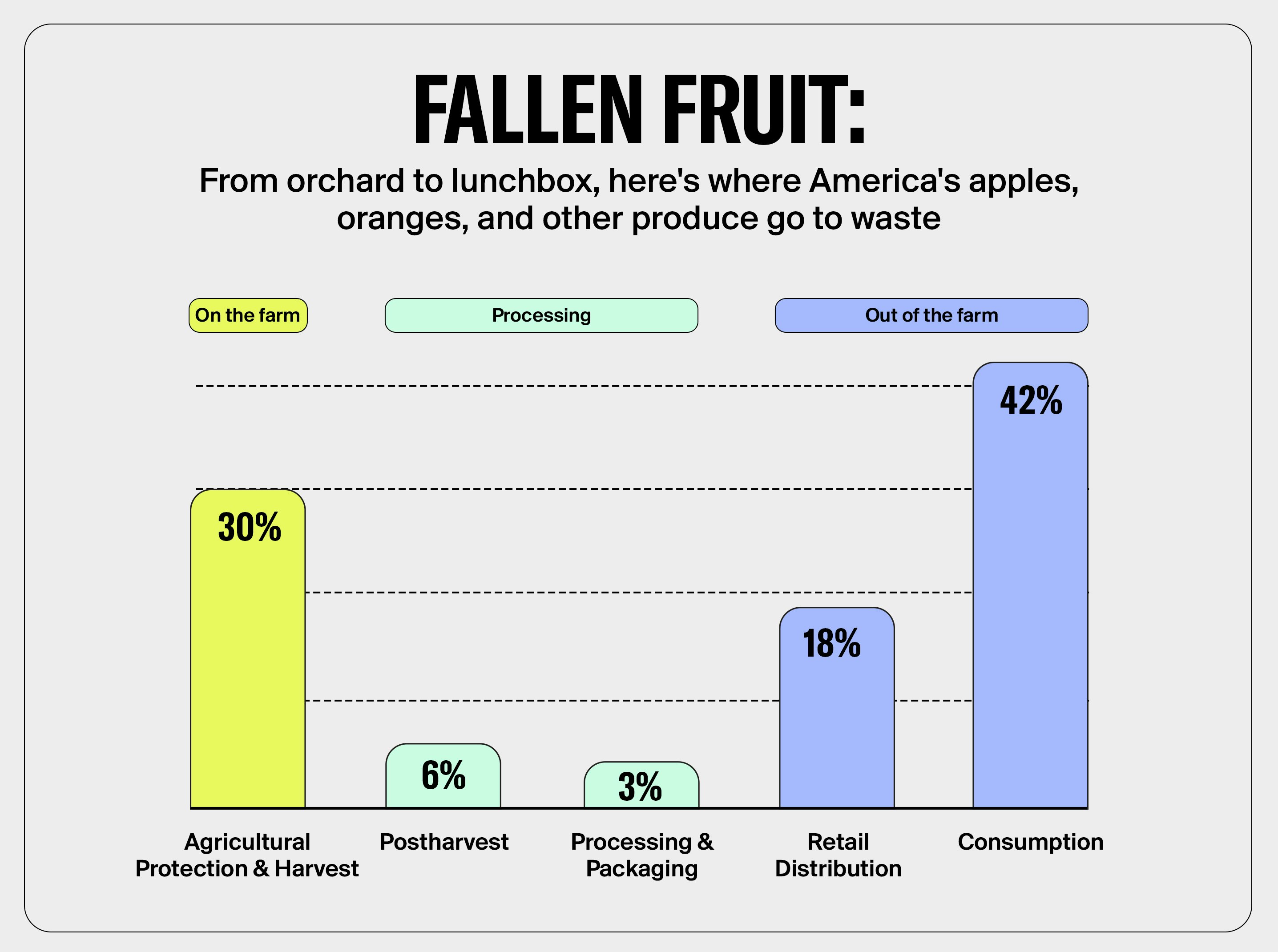
When we think about food waste, what often comes to mind is what’s leftover on our plates that we scrape into the trash can or the unprepared food that gets tossed into the bin during a monthly fridge cleanout. But it's far more complex than that. Otherwise edible grub goes uneaten at every stage of the food production process.
According to a 2020 report from the USDA on the economic drivers of food loss, in North America, 40 percent of losses in fruits and vegetables happen before they reach consumers, and the largest portion happens in the field itself, with about 30 percent lost before production begins, meaning on the farm.
One factor is weather — floods, droughts, or even conditions that brings in bugs cause many farmers to over plant.
The 2023 apple growing season is a prime example. The weather led to a boom in apples, and that, mixed with market factors, resulted in an abundance of fruit — something that, without subsidies like the $10 million secured by Senator Manchin — usually leads to wasted produce.
Different types of produce each have unique challenges. Strawberries, for example, are hand-picked and “susceptible to plant diseases, insect damage, and competition with weeds for nutrients, water, and light, as well as market fluctuations,” the USDA report noted. Romaine lettuce, which has been increasing in popularity for the past several decades, has more open outer leaves than other heads of lettuce; because that’s less appealing to consumers, farmers often significantly trim the outer leaves in order to meet consumer demands, the USDA says. This results in a lot of wasted lettuce.
Weather is also a big driver of produce loss — and one that is increasingly unpredictable as the effects of our planet’s changing climate occur. The USDA notes that over the past century in the Midwest, for example, temperatures have risen across all seasons, growing seasons are longer, and rain is less predictable and often more severe.
Once the food reaches distributors and consumers, an estimated 18 percent of the total produce wasted happens at the retail distribution level, with 42 percent estimated to be wasted at the consumer level.
What We Waste
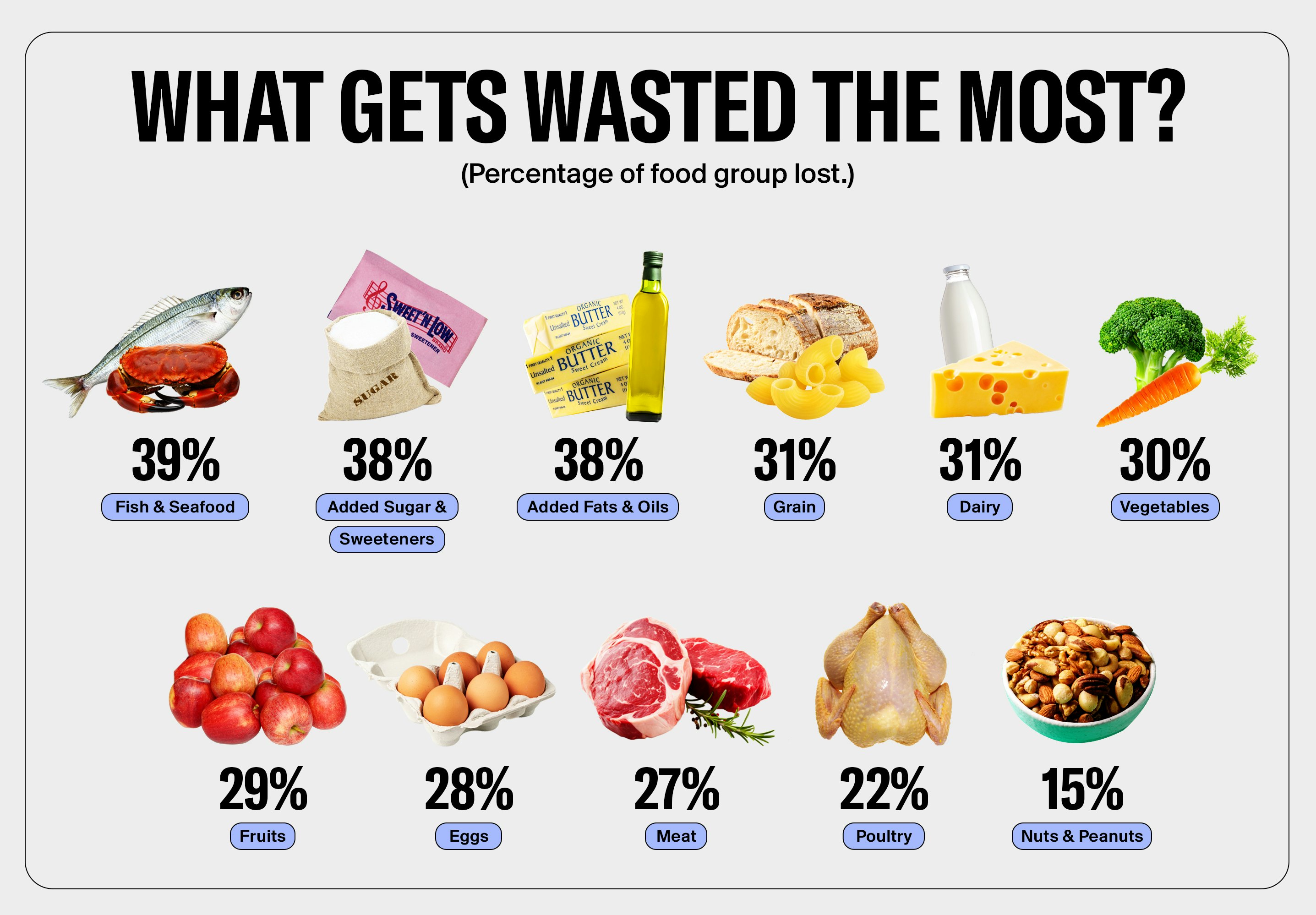
Not all food is wasted equally. According to data from a 2014 USDA report on food waste, while we waste about one-third of the grains, dairy, vegetables, fruit, eggs, and meat we generate in this country, we waste almost half — roughly 40 percent — of the fish and seafood, added sugar and sweeteners, and added fats and oils we produce.
While it’s hard to pinpoint exactly where things go awry, researchers have come to some general conclusions. On the farm, weather, diseases, and overproduction dominate food loss. In transit, lack of temperature control and long travel times create spoilage. At stores, overstocking, changing consumer habits, and “ugly fruit” generate the bulk of waste. And at home, arguably the largest area of waste, we overpurchase what we think we’ll eat, forget about expiration dates, take those dates too seriously, and underuse the entirety of the food we buy.
Where It All Goes
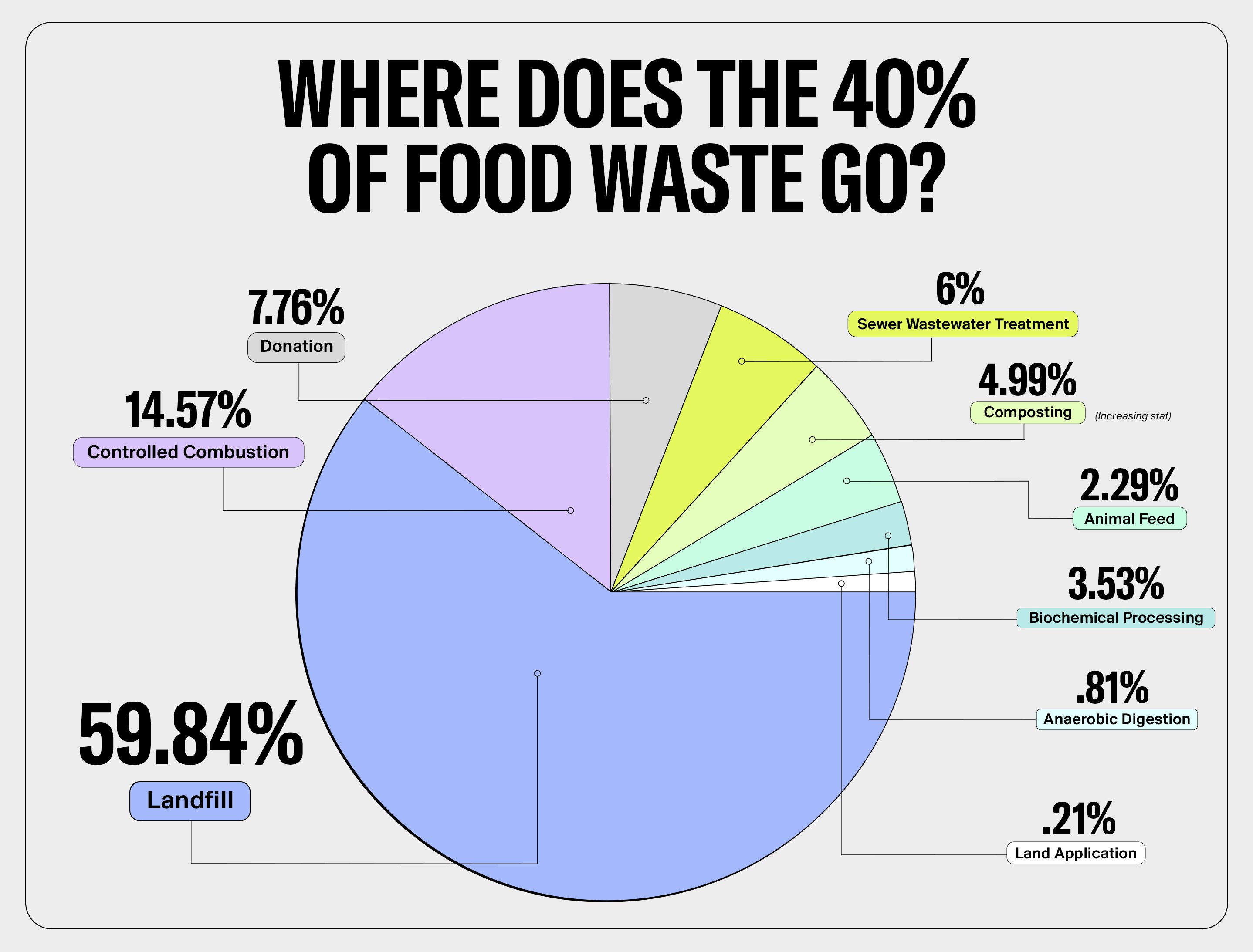
The majority of the food we don’t consume makes its way into a landfill. In 2019, nearly 60 percent of the food we wasted in restaurants, homes, and other food retail locations ended up in the dump, according to the EPA. That amount equates to nearly 40 million tons of waste.
In that same year, just 5 percent of food waste went to composting, despite the fact that nearly all of the waste has the potential to be composted. Why don’t we compost more? While anyone can compost, the practice has yet to become mainstream. There are some 500 municipalities that compost in the United States, covering a tiny percentage of the population. But where it is being implemented — in San Francisco, New York, and Seattle, for example — it fast becomes a way of life. Composting is, after all, as easy as tossing out food — but with far better results.







